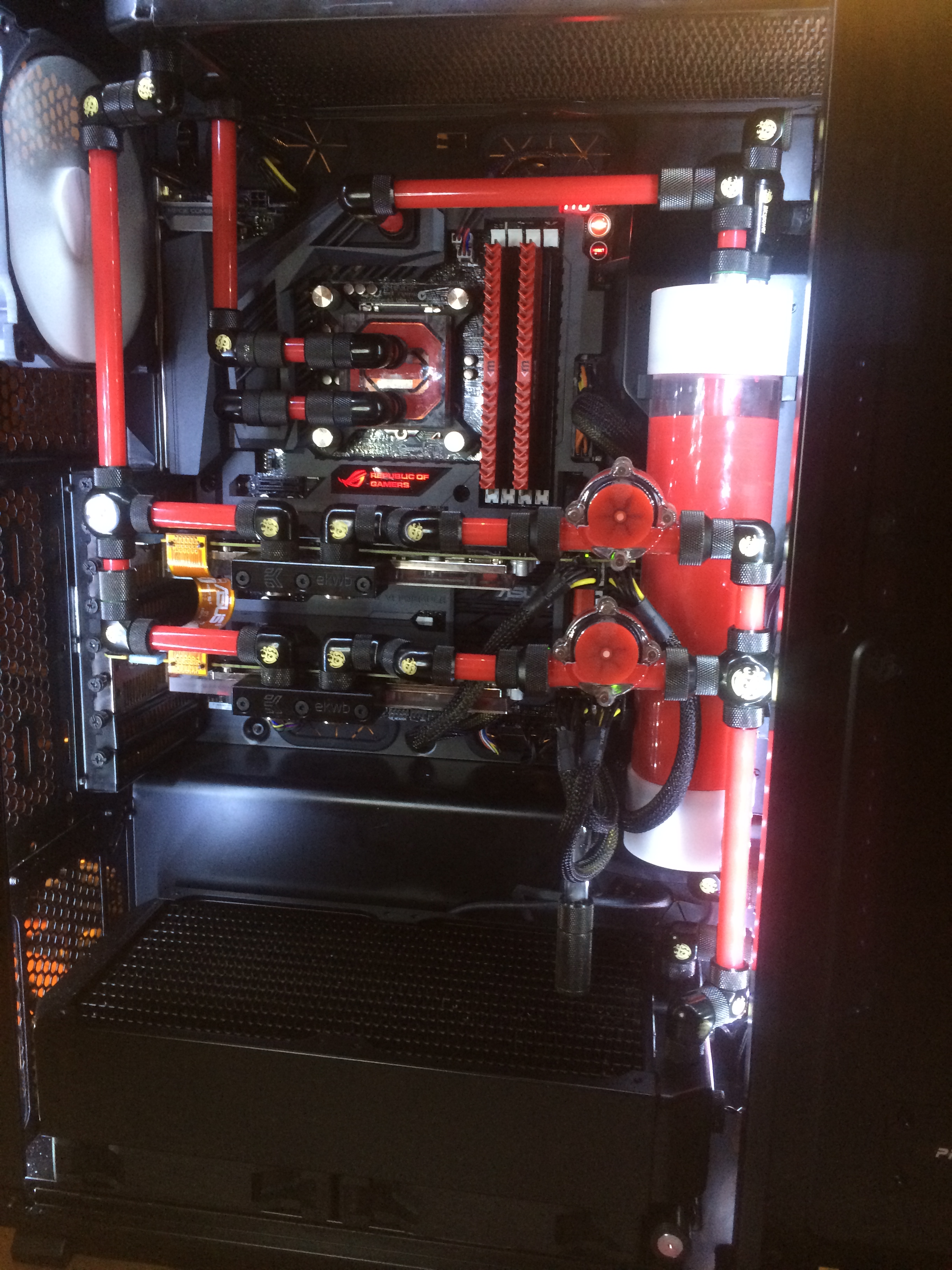Radiator Selection
GPU = 266 watts peak gaming (stock)
GPU Power Limiter Range = +50% w/ OC
CPU Power = 130 watts (OC'd)
let's forget the 50% thing and assume your GPU OC only draws an extra 20%.
Heat Load = 130 (CPU) + 2 x 266 x 120% (GPUs) + 12 watts (pump) or 780 watts.
Your radiator core will be expected to handle roughly 60% of that load or 468 watts, the rest being radiated from component and block surfaces or can be written off by all components not being at peak load at the same time.
Using the test info determined here:
http://www.overclock.net/t/1457426/radiator-size-estimator
We see that, using those extreme rpm fans, a 480 radiator can handle about 425 watts ... leaving you a bit short, even at these extreme speeds. And hence the question at the beginning... what are the goals for the system ? When we build custom water loops for folks, the designs are based upon 1200 rpm fans such that under most usages (including high end gaming), the fans will spin from 350 - 850 rpm and thereby be totally inaudible. With that build, I would be looking at 7 or 8 x 120mm of rad or 7 x 140mm in order to obtain a "quiet room" . Again, your goals may vary, if you will be playing games with headphones on, you won't care about noise but again, noise reduction is what pushed people to custom loops.
If as you said, you are going for silence, then 2200 rpm fans will not deliver that. This is what 2000+ rpm fans sound like (H100i)
https://www.youtube.com/watch?v=cTf0Vq1j4Ec&feature=youtu.be
When CPU load hits 55% I gonna leave the room.
As to the RAM, the likelihood of two separate packages working together decreased w/ increased speed. With DDR3, 1333 and 1660 were almost never a problem, 1866 was a reasonable bet + 2133 was iffy and 2400 was asking for trouble.
I don't as yet have as much experience with DDR4, mostly because buys have wisened up and i don't have to deal w/ separate packages. But I don't understand why you would make this choice
Option A - But two separate packages and YOU take the risk that they will work. if they don't you have no warranty coverage so an exchange with the manufacturer is out of the question.
Option B - You buy the same RAM from the same manufacturer at the same speed, at the same timings in a single package. You pay less money and you have full warranty coverage. If any stick ever fails, they send you a new compete set of 4 sticks.
The question therfore has to be asked, what is it in Option A that makes it a better choice.



